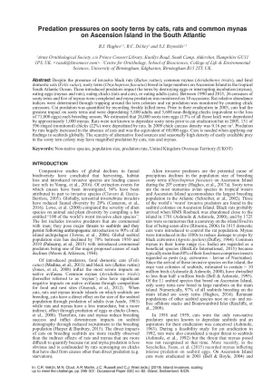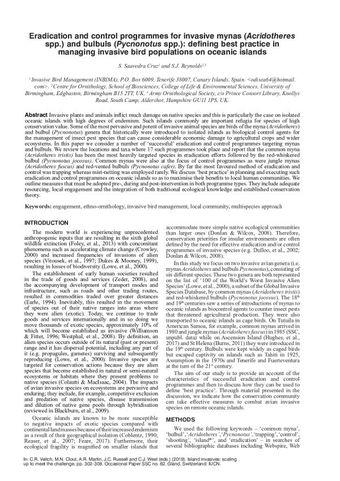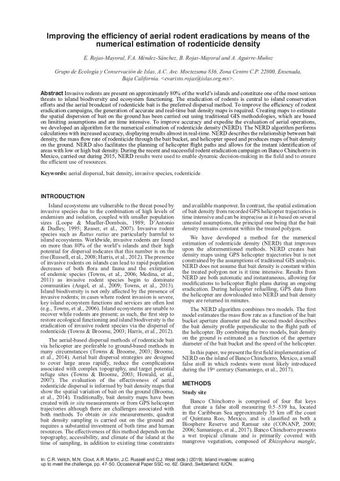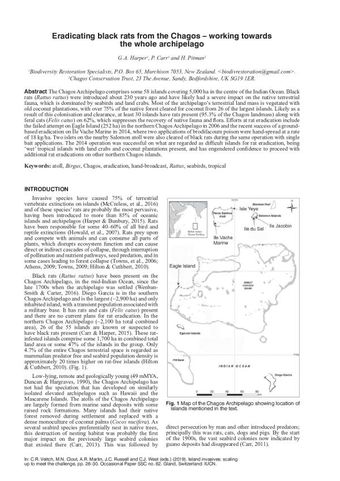Predation pressures on sooty terns by cats, rats and common mynas on Ascension Island in the South Atlantic
- Description:
- Despite the presence of invasive black rats (Rattus rattus), common mynas (Acridotheres tristis), and feral domestic cats (Felis catus), sooty terns (Onychoprion fuscatus) breed in large numbers on Ascension Island in the tropical South Atlantic Ocean. These introduced predators impact the terns by destroying eggs or interrupting incubation (mynas), eating eggs (mynas and rats), eating chicks (rats and cats), or eating adults (cats). Between 1990 and 2015, 26 censuses of sooty terns and five of mynas were completed and myna predation was monitored on 10 occasions. Rat relative abundance indices were determined through trapping around the tern colonies and rat predation was monitored by counting chick carcasses. Cat predation was quantified by recording freshly killed terns. Prior to their eradication in 2003, cats had the greatest impact on sooty terns and were depredating 5,800 adults and 3,600 near-fledging chicks (equivalent to the loss of 71,000 eggs) each breeding season. We estimated that 26,000 sooty tern eggs (13% of all those laid) were depredated by approximately 1,000 mynas. Rats were not known to depredate sooty terns prior to cat eradication but in 2005, 131 of 596 ringed (monitored) chicks (22%) were depredated by rats. In 2009 chick carcass density was 0.16 per m2. Predation by rats hugely increased in the absence of cats and was the equivalent of 69,000 eggs. Care is needed when applying our findings to seabirds globally. The scarcity of alternative food sources and seasonally high density of easily available prey in the sooty tern colony may have magnified predation by cats, rats and mynas.
- Display date:
- 2019
- Collections:
- Secretariat of the Pacific Regional Environment Programme (SPREP)
- Publisher:
- International Union for Nature Conservation (IUCN)
- Content partner:
- Secretariat of the Pacific Regional Environment Programme (SPREP)
- Availability:
- Not specified
-
Copyright status: All rights reservedFind out more about what you are able to do with this itemThis item is all rights reserved, with means you'll have to get permission from Secretariat of the Pacific Regional Environment Programme (SPREP) before using it. For more information, please see our use and reuse page.What can I do with this item?Non-infringing useNZ copyright law does not prevent every use of a copyright work, and this item may be hosted by an international institute or organisation. You should consider what you can and cannot do with a copyright work.No sharingYou may not copy and/or share this item with others without further permission. This includes posting it on your blog, using it in a presentation, or any other public use.No modifyingYou are not allowed to adapt or remix this item into any other works.No commercial useYou may not use this item commercially.
Related items
Welcome and warm Pasifik greetings
The information on this site has been gathered from our content partners.
The names, terms, and labels that we present on the site may contain images or voices of deceased persons and may also reflect the bias, norms, and perspective of the period of time in which they were created. We accept that these may not be appropriate today.
If you have any concerns or questions about an item, please contact us.



